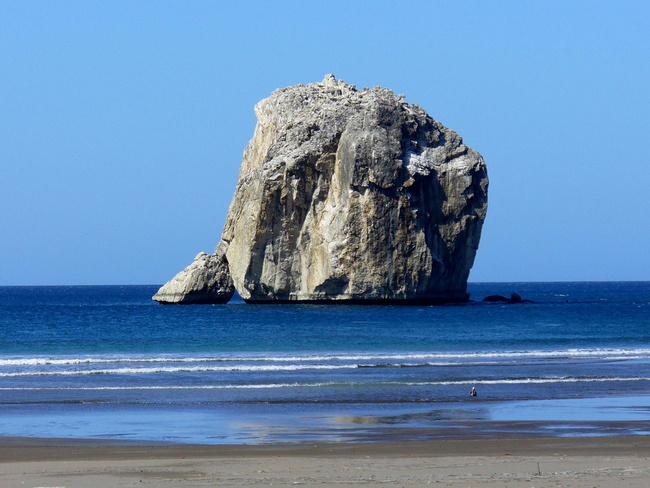
Santa Rosa National Park
Jutting westward into the Pacific, Santa Rosa National Park (Parque Nacional Santa Rosa) engulfs much of the Santa Elena Peninsula located in northwestern Guanacaste. Founded in 1971, Santa Rosa was the first park established in all of Costa Rica.
More about Santa Rosa National Park
An abundance of flora and fauna reside in the park's immense forests that give way to virgin white-sand beaches. Santa Rosa is uniquely orientated to campers, offering a number of campgrounds for visitors who wish to spend the night. The park is home to Costa Rica's most famous monument, the Hacienda Santa Rosa-also known as La Casona-which marks the fall of filibuster William Walker's professional mercenaries to a local makeshift peasant army in 1856. The Casona serves as a history museum that pays tribute to the battle.
Ten unique habitats span the 122,350 acre park, ranging from mangrove swamp to dry tropical forest, each of which provide sanctuary for copious animal species. A total of 250 species of bird inhabit the park as well as 115 species of mammals which include iguanas, deer, monkeys-white faced, howler, and spider-five species of big cats, and a plethora of bats.
The park is divided into two distinct sections. The more significant Santa Rosa sector makes up the southern portion of the park, while the Murcielago sector, separated from the Santa Rosa sector by a broad strip of privately owned land, lies to the north.
A kilometer or so beyond the entrance to the Santa Rosa sector is a rusting antique armored car-a remnant of an unsuccessful Nicaraguan military campaign to invade Guanacaste in 1955. 3.5 miles (6 km) up the road is the newly rebuilt Hacienda, a replica to replace the old one that burned to the ground in 2001 by arsonists. From here trails branch out into the park's interior. The mile long (1.5 km) Naked Indian Trail forms a loop through the dry forest, along streams and waterfalls teeming with local fauna. Several watering holes line the Los Patos trail, making it ideal for spotting wildlife.
8 miles (13 km) beyond the Casona, via rugged dirt road, lies Naranjo Beach which is known for its exceptional surfing. Alongside is Nancite Beach which limits its visitors (30 per day) in order to prevent disruption to one of the most significant nesting sites of the Ridley Turtle in Costa Rica. As many as 10,000 turtles at a time may swarm the beach during the months of September and October.
The entrance to the Murcielago sector is 6 miles (10 km) beyond the Santa Rosa park entrance, along the Inter-American Highway. A sign at the village of Cuajiniquil will direct visitors to take a left at the fork-in-the-road that leads to the Murcielago park entrance about 5 miles (8 km) beyond. The road passes the old CIA training camp where contras were trained to fight in neighboring Nicaragua during the Sandinista regime's tenure. It's no coincidence that the Murcielago sector was once the private property of the Samoza family, which ruled Nicaragua with an iron fist. After the death of the last Samoza dictator, Anastasio Somoza Debayle, the land was expropriated by the Costa Rican government and subsequently incorporated into the Parque Nacional Santa Rosa.
Beyond the old CIA training camp, now used by the Costa Rican police force, is a secret airstrip that Oliver North had constructed to supply the contras. A mere 5 kms further is Murcielago's entrance. The isolated white-sand beaches of Blanco Beach are 10 miles (16 km) beyond the park's entrance, an excellent place for birding. Nearby Cuajiniquil Canyon is a unique clammy microclimate that hosts some interesting flora and fauna.
The Santa Rosa sector's park entrance can be accessed via the Interamericana, 23 miles (37 km) north of Liberia, on route to the Nicaraguan boarder. Busses depart from Liberia and La Cruz daily-ask the bus driver to drop you off at the park entrance.
Dry season is the best time to visit as roads are easily navigable and vegetation is sparse, making for easy observation of fauna.
Moments to look forward to
Santa Rosa National Park Guided Hike and Liberia City Tour
We believe travel is more than ticking destinations off a list – it’s about discovering new places deeply, feeling connected wherever you go, and knowing you have a trusted team behind you every step of the way.



